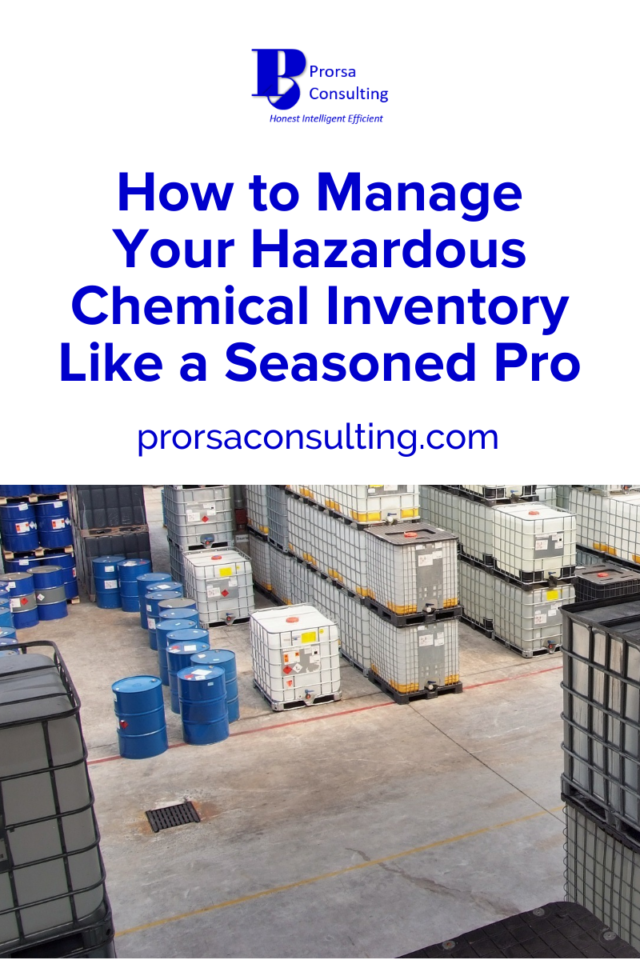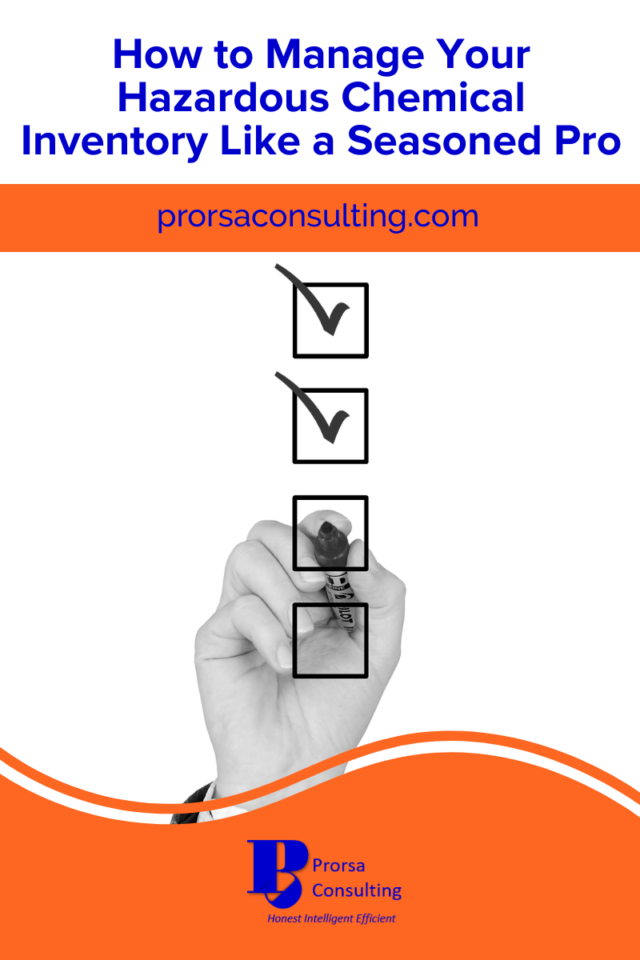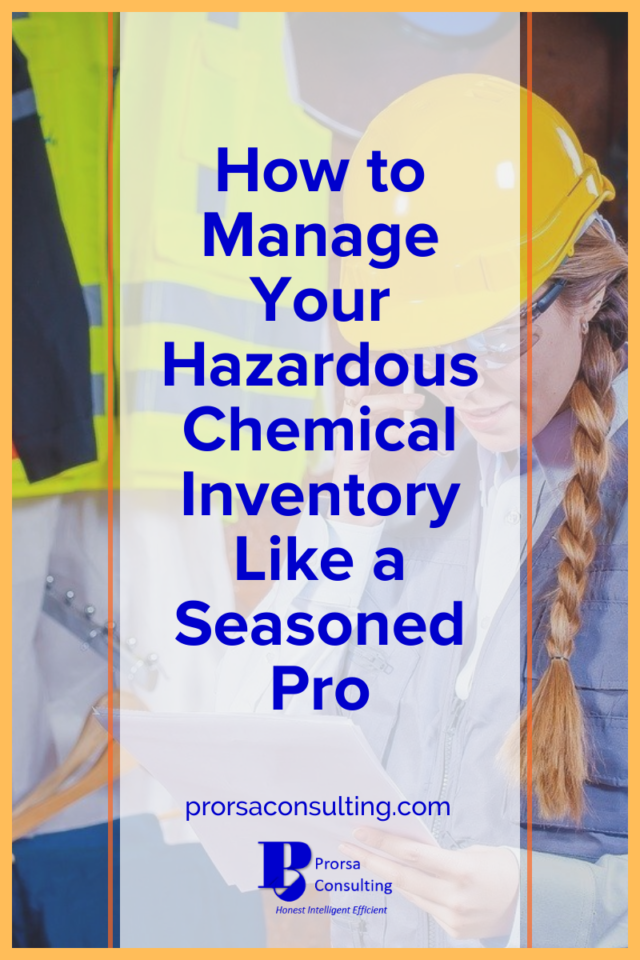How to Manage Your Hazardous Chemical Inventory Like a Seasoned Pro
By : Admin -
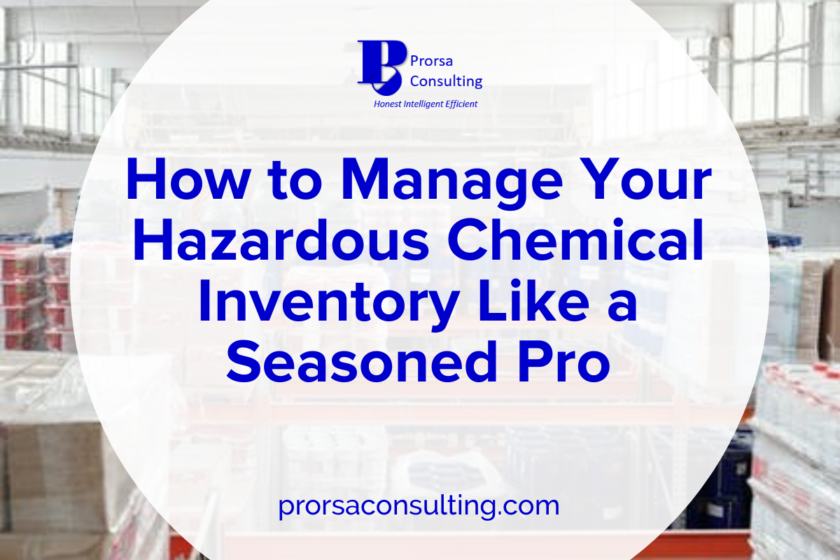
A facility’s Hazard Communication (HazCom) program usually presents low hanging fruit for compliance violations.
In FY2019, the Hazard Communication Standard (HCS, found at 29 CFR 1910.1200) was the second most frequently cited regulation by the Occupational Safety and Health Administration (OSHA). Maintaining a hazardous chemical inventory is just one of the requirements contained in the HCS.
Thus, excellent management of the workplace hazardous chemical inventory serves as a logical way to boost safety compliance. What activities should a site undertake to administer its chemical list well? Keep reading and uncover the answer to this question.
Hazardous Chemical Inventory Activity 1: Create a Listing
Trying to manage items can pose a difficult challenge when you do not have explicit, complete information. Therefore, the beginning of the journey to developing a chemical inventory has to begin with a list.
How can facilities get started with an inventory list?
The most suitable way to create a hazardous chemical list would be to start with an old one that may need some updating. In most cases, the employers will have an existing listing on-site.
However, some operations may be starting entirely from scratch. In these cases, safety data sheets (SDS) become the vehicle to a proper listing. SDS are required in work areas where hazardous chemicals get used. Thus, several iterations of the SDS catalog may exist throughout a site if the HazCom program lacks regular maintenance.
Chemicals also may be present on-site and have no SDS appearing in the catalog. For this reason, physical checks for hazardous chemicals in the workplace should be performed to ensure the identification of all applicable substances.
How do you go about documenting a hazardous chemical inventory list?
A template provides the easiest and most cost-efficient way to document a list of chemicals. Organizations can develop these forms in any word processing or spreadsheet format. When using a template to capture a chemical inventory list, make sure to provide space for entry of the following information for each substance:
- Product identifier
- Manufacturer
- Chemical Abstracts Service (CAS) number (if applicable)
- Work area where the chemical is utilized/stored
- Emergency contact number
- Date of Last SDS revision
- Status of the Material (i.e., “active” for those in currently being used or those still on-site and “inactive” for those chemicals previously utilized and regulations require the site to maintain the SDS)
After entering each chemical’s information into the inventory template, keep the completed listing with the Written HazCom Program.
Another method to maintain both the chemical inventory list and HCS required SDS entails subscribing to an electronic subscription service. Companies such as MSDSOnline, Sphera, and Enviance offer paid platforms to perform chemical management activities online. These solutions perform SDS update functions for you and offer the flexibility to meet your operations’ specific needs.
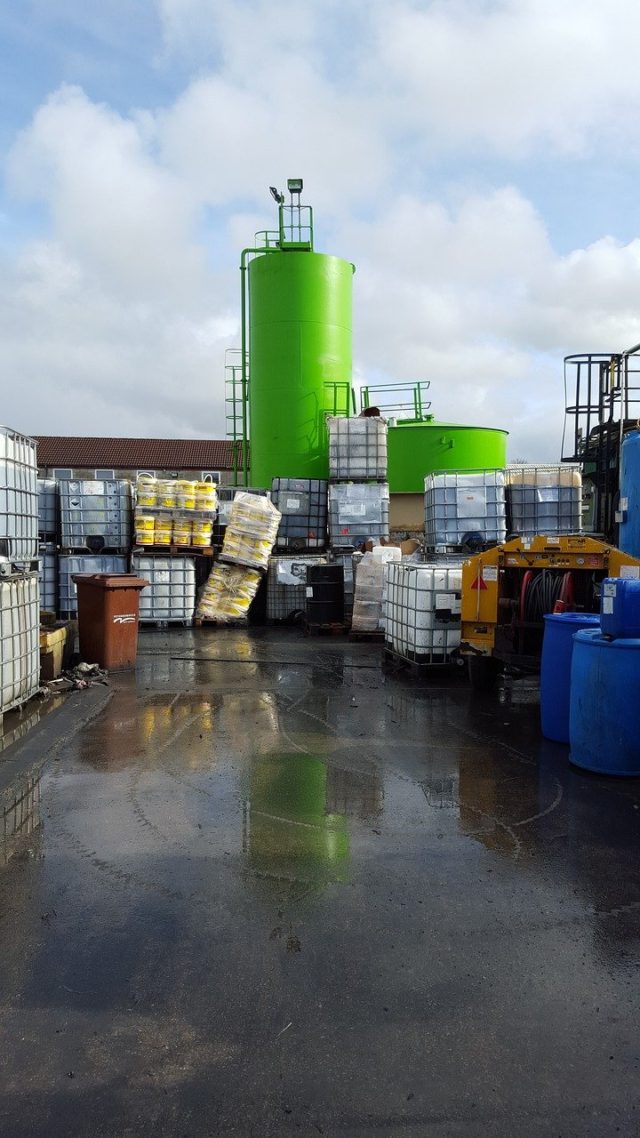
Image by Dawn99 on Pixabay.com.
Hazardous Chemical Inventory Activity 2: Implement Chemical Approval
What is the purpose of chemical approval?
Chemical approval provides an assessment of chemical requirements before purchase. Thus, sites can identify hazardous chemicals and any necessary changes before arrival at the operation. Having this information beforehand helps facilitate ongoing maintenance of the hazardous chemical inventory.
In this scenario, preparations can also commence in advance for required training and personal protective equipment (PPE) associated with new chemicals. Furthermore, the evaluation process can support other compliance programs like those for environmental management.
Which key components should be included in a chemical approval process?
A robust authorization program for hazardous chemicals incorporates the following:
- Chemical Request
- Environmental, Health, and Safety Review
The chemical request portion entails the requester providing information on the product to a reviewer for analysis and approval/disapproval. Facilities can perform this process via a questionnaire.
The questionnaire should ask about chemical-specific items. Sites could include questions regarding the product identifier, location of potential use, area of possible storage, the product’s proposed use on-site, and available PPE on the questionnaire. A copy of the SDS should accompany the request, as the reviewer will find its information useful.
During the Environmental, Health, and Safety Review, the reviewer will assess the chemical’s hazards and determine the HazCom program updates necessary to facilitate the product’s on-site use. A standard form most often facilitates the assessment.
The reviewer would have the power to refuse the product’s utilization at the site if regulatory requirements cannot be met. Upon completion of the review, the review would communicate results to the requester and HazCom program administrator.
Hazardous Chemical Inventory Activity 3: Check the Physical Inventory Regularly
The quality of a facility’s hazardous chemical inventory documentation resides in the ability to maintain the data in a comprehensive and current manner. Consequently, regular inspections of the on-site chemicals assist in promoting high-quality recordkeeping.
What items should sites consider during chemical inventory checks?
The primary purpose of chemical inventory inspections is to identify hazardous substances that the facility may not have previously recognized for inclusion in the program. The review provides an opportunity to verify how well the program works. Moreover, it allows the facility to check and correct potential compliance issues.
However, businesses can utilize chemical inventory checks to assess additional workplace HazCom requirements, like proper chemical labeling and storage. A thorough inspection would include a physical evaluation of all chemical-containing areas with inconsistencies between on-site conditions and the inventory list noted.
How often should hazardous chemical inventory checks occur?
Each site has flexibility in determining the frequency of these types of reviews. For example, checks could occur monthly, quarterly, or semi-annually. Nonetheless, conducting inspections less frequently than the timeframes above could prove problematic to maintain a current inventory, as numerous chemical additions or removals could occur over more extended periods.
In the world of safety, an event did not happen if you can produce documentation of occurrence. Hence, sites should include records of inventory checks as part of the HazCom program. Using the most recent copy of the inventory list to perform the inspection provides a simple documentation method.
The inspector can place a checkmark next to chemicals still in use. Removed substances can be noted as inactive to indicate no further on-site usage. Inspectors can write in the product identifiers for newly discovered chemicals. Finally, be sure to include the inspection date and inspector’s name on the completed record before submittal for updates to the written inventory.

Image by Creative Art on Pikwazard.com.
Hazardous Chemical Inventory Activity 4: Review & Update Regularly
The last action in the process encompasses updating the hazardous chemical inventory to keep it current. The products utilized at facilities often change over time. As a consequence, regular updates to lists and SDS become necessities.
What occurrences should trigger an update when maintaining an inventory of chemicals?
When a new chemical is identified on-site, an update to the list and SDS catalog should occur. As previously referenced, new chemicals will be presented through requests for approval or uncovered during physical inventory checks. Sites should complete any necessary documentation changes from these actions as soon as feasible.
Additionally, manufacturers will modify data contained within SDS. Some of the changed items may be captured on the chemical list, necessitating a change. Thus, as operations receive new SDS for existing products, the hazardous chemical inventory must be reviewed to determine if an update is needed.
What other strategies can sites use to support the hazardous chemical inventory process?
Regardless of the frequency of triggering events, the entire HazCom Program should undergo periodic reviews as part of a site’s overall safety compliance audit. Any potential issues found during this evaluation would enter the facility’s normal corrective action process for resolution.
Furthermore, sites must provide training to affected employees when the hazardous chemical inventory changes. Facilities can hold awareness sessions during safety meetings or toolbox talks. Best practice also dictates the inclusion of HazCom as a topic during recurrent training.
Other Workplace Safety Compliance Topics of Interest
Slips Trips and Falls Frequently Don’t Get Their Due Focus Until the Worst Happens
Dear Noncompliance: Meet the Quick 16 Safety Walkthrough Inspection
How to Craft an Informative EHS Awareness Program for Continued, High-Value Business Wins
Concluding Thoughts
Robust hazardous chemical inventories strengthen workplace safety compliance. Moreover, the challenge of maintaining them lessens with a few value-added strategies to promote efficiency and success.
We encourage your feedback on this blog. Be sure to like, comment, and share below. You can also provide feedback via our Contact Us page. Also, don’t forget to follow Prorsa Consulting on LinkedIn, Pinterest, and Twitter.
Prorsa Consulting works with regulated businesses to assess, maintain, and improve environmental and safety compliance to lower business risk. Click on the banner below to start working with us by scheduling a complimentary discovery call.
How would you like to have access to additional, exclusive EHS updates & info from Prorsa Consulting? Just signup for the Prorsa Consulting Newsletter below. You’ll get access to our Free Resources area and all the tools, templates, and presentations in the library. Get your free subscription today!

